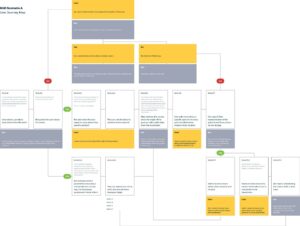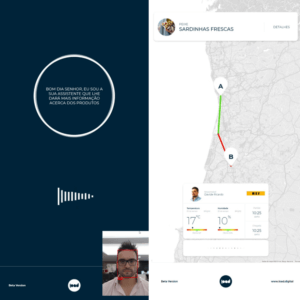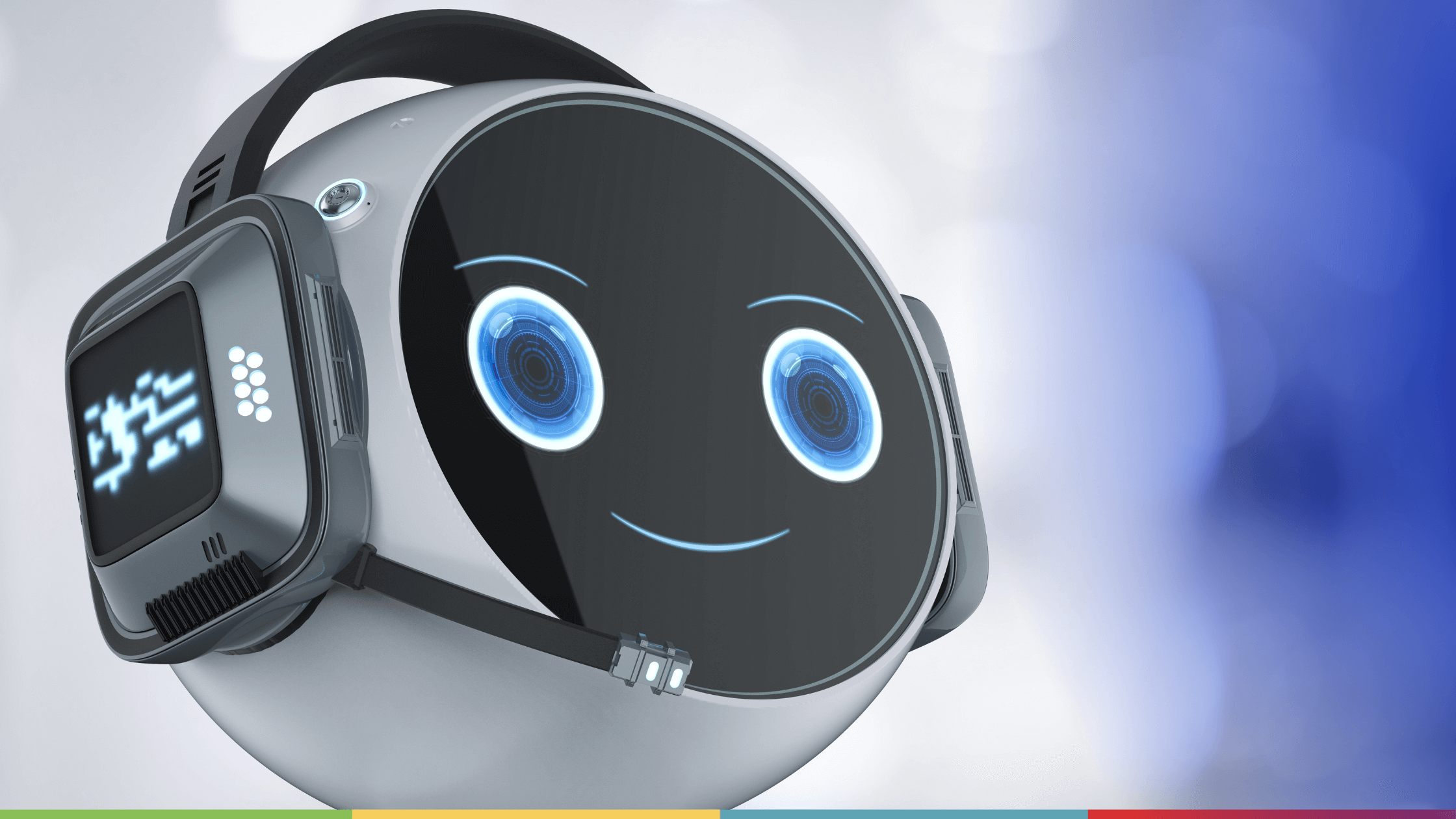Future or Reality?
The tech industry has been suffering major shifts with time and we are witnessing that first hand. One of the many things impacting people’s lives and overall businesses is Artificial Intelligence (AI). According to many experts, AI has a huge influence on our jobs, in several softwares being developed and implemented in different industries, in the food sector, in what we drink and put inside our bodies. Of course, these are just some of the things where AI plays an important part and will definitely continue to grow.
So now you may ask: What is AI after all?
AI or Artificial Intelligence is exactly what the words say: it is intelligence demonstrated by machines/computers or computer-controlled robots. It mimics human intelligence regarding the ability to learn from past patterns/situations, solve problems & think, though its goal is also to suppress it and to become more efficient and reliable long-term. With this, people can program computers to execute several tasks, from simple to complex, in the most diverse industries out there. Despite the evolution we see happening nowadays, some things are still more of a dream than a reality, as you’ll read further in this article. Others, not so much. With AI we are now able to get a better medical diagnosis, have a voice and handwritten recognition, and to work with Search Engines, for instance.
How will AI affect human lives in the near future?
So far, there is still a big gap separating Narrow AI from General AI. Narrow AI is one of the parts of Artificial Intelligence — specific purpose, semi-adaptable, isolated in context. It’s generally used for single tasks or a limited range of tasks. This one can overpower human thinking, but it doesn’t have the ability to transport knowledge from one field to another. It’s frequently used with a group of pre-trained data, although it’s not effective enough for adaptive learning in real-time. However, the ultimate objective is to achieve an interconnected, self-learning, autonomous system, able to deal with all sorts of real-world problems. That brings us to AGI or General AI. AGI focuses on learning tasks and solving problems without explicit detailed instructions. It should have “reasoning” and also the ability to transfer knowledge between several domains.
There are also other stages of AI, very dreamy and futuristic ones, that go beyond Narrow and AGI, such as ASI (Artificial Superintelligence) & Singularity and Transcendence.
ASI aims to have algorithms that are able to suppress the smartest human in every domain. Of course, so far, it’s hard to say what kind of capacities and skills we are talking about, but the idea is to have algorithms that will help solve bigger problems like hunger, dangerous climate change, redesign or develop new governance models and so on.
Singularity and Transcendence come from the previous one and it focuses on the massive expansion of human capacity. Such futuristic things that we are not even sure if it will happen in our time. We are talking about brain interconnection that allows us to share ideas and let a third party observe our dreams and thoughts. Basically, a transcendence of the human body and mind. Cool, right?
As these bold, long-term projects are being worked on for “tomorrow”, the market needs solutions for today’s problems, where current Narrow AI’s and Distributed Ledger Technologies (e.g.: blockchain) can make a big difference when compared with traditional systems.
This is why we at Load have been dedicating so much time to grow our knowledge of these new technological trends. Logically, as a company that works directly with such technologies and invests in R&D programs within this specific topic, we thought it would be fruitful to share our insights with you and let you know where we stand with AI.
Many people think that AI is a way to remove human collaboration from numerous businesses and activities but truly, Artificial Intelligence is a way to facilitate working processes and to improve the quality of the end result we deliver.
The role of AI is growing rapidly and people have to be better prepared and educated to handle such fast and somehow invisible changes. Sure, many jobs will slowly disappear but also many others will be born. Therefore, one of the biggest challenges companies have to face is the readiness to know which skills will be important to their business and to properly train those who are already with them.
Overall, the development of Artificial Intelligence is mostly based on algorithms, data, computing, information but it also requires perspectives from other fields such as humanities and sciences. The main goal of AI is to gather all the data and create algorithms that will help make predictions and facilitate decision-making processes, saving people time, resources, and avoiding unnecessary mistakes. It also allows us to build consumer services and products with innovative features that people are gradually looking for. As we know, our customers are more demanding than ever.
At the end of the day, it is expected that AI will bring together humans and computers in a way that will enhance and facilitate human life in the future to come. With it, many new jobs/skills will arise; customer behavior and expectations will change drastically; processes will be renewed and personalized to each business, as mentioned before.
Of course, all changes seem frightening and threatening at the beginning, but technology is never a threat when well implemented and thought about the needs of the end consumer.
Our perspective on AI.
Itis interesting to see the market interest in these trends grow. The fact that we’re getting more and more invitations to share our learnings and to talk about these technologies is a clear sign that perhaps mass adoption is not so far away after all.
Our overall decisions and actions should be faster, allowing us to transform the world into a more interconnected and smarter one. That world is sustained by technology, digital knowledge, and Artificial Intelligence, among many other aspects. As the technology company we are, we must have the ability to understand all indicators that surround the domain of each of our clients, and have the ability to transform them into digital products, adding value to their overall business activity.
It’s very important for us to equip ourselves with as much knowledge as we can in this specific discipline (AI). Long run, it will allow us to give pertinent explanations and to have a highly innovative approach that brings out-of-the-box solutions.
LOAD’s R&D program
load, we love exploring concepts, projects, and coming up with prototypes that will eventually turn into future products. One of them is a “Conversational Bot” in a Retail scenario.
In times where interfaces & devices are voice-activated, our approach goes beyond the traditional one. We focused on understanding how we can help improve daily shopping activities, allowing people to get familiar with the product by using a voice assistant.
Our initial idea was to build a framework for supporting a cognitive, highly adaptable conversational bot, running on top of a blockchain, or at least using data stored in a blockchain. Our first step was to learn and practice within the widest range of these technological trends. We were aware that the end result would change continuously as we’d go. Which is exactly what has been happening so far.
A Conversational Bot, ‘sitting’ on a supermarket shelf, capable of providing information proactively to consumers, based on the product they pick. In this scenario, we would have a voice interaction with the user, near a shelf. After detecting a customer picking up a certain product from the shelf, the bot starts immediately talking with him/her, congratulating about the choice they made and encouraging him/her to ask more questions about it: conservation, storage, temperature, usage, origin, product composition, etc.

In the AI part of our project, we considered 2 major modules: Image Recognition and the Conversational component (Speech-to-Text, Text Analysis, Text-to-Speech).
After several attempts, Speech-to-Text-to-Speech proved not to be feasible to implement from scratch like we have been investigating, so a new approach was planned, now using known libraries that resulted from years of work in this specific area, and are available to be integrated.
Image recognition focused on recognizing different people’s emotions. A more simplified approach revealed to be necessary, focusing only on positive and negative emotions. With NLP (Natural Language Processing), it’s possible to give trustworthy information to the user and to gather his feedback regarding his feelings towards the product. This will give more detailed insights to the business owner about the product value (people’s perception of the product).

Regarding Blockchain, we have centered our work in this Retail Sector scenario, using Smart Contracts to immutably store and secure data from different sources across the supply chain. This evolved to build an API to receive inputs from sensors and put them in the Blockchain in a secure and reliable way. Another API is used by the blockchain to interact with the Bot, to supply all the data stored in the blockchain that the bot asks and presents during its conversation with the customer (like the temperature of conservation, humidity, dates, locations, etc.)
After lots of learning, successes, and failures, we have gradually entered in delivery mode, and we are currently identifying the perfect partner, with a real business context, who is willing to use our platform to improve his business and bring it to life in the 2020s.
From this moment on, we know what can be done within the technology, budget, and time limitations. We know how to achieve it, so now we are already working towards a well-defined prototype.
Conclusion
We can spend here hours writing about this topic and describing in detail our processes and thoughts on this matter, as we are truly involved in this project. At the end of the day, technology will evolve with or without our input, but at LOAD we realize how important it is to be on top of new technologies and trends. The needs of our clients are shifting visibly and therefore their solutions should shift together with those upcoming demands and that is where we can make an impact.
Understanding Artificial Intelligence fully is quite challenging and even ambitious, as changes are happening fast, but nevertheless, we should all understand how they will facilitate our lives and what impact it will have in the near and distant future.















